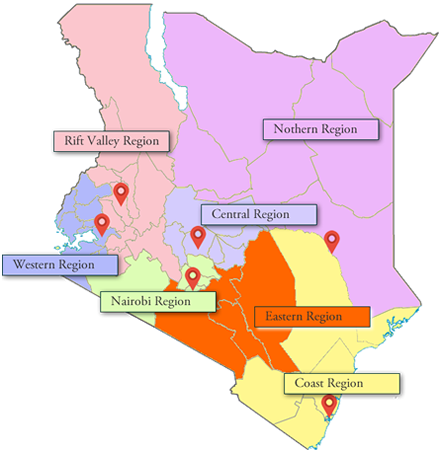Effects of Counterfeiting on Economic Growth and Foreign Direct Investment in Kenya (By Elijah Ruttoh, ACA)
Over the years, economic growth and FDI inflows into Kenya have been very low and volatile. The Kenyan government has adopted various policies for attracting more investment. Among these policies include targeted financial concessions like tax concessions, cash grants and specific subsidies; focused improvement in infrastructure and skill parameter and creation of a base to meet the demands and expectations of foreign investors; improving the general business climate of the country by changing the administrative barriers and creating state agencies to help investors. This state of affairs has led to the stagnation of the manufacturing sector which is largely dominated by foreign firms. This could be attributed to high levels of counterfeiting which discourages foreign investors from doing businesses in the country and also limits economic growth.
The objective of this study was to examine the relationship between counterfeiting and economic growth and Foreign Direct Investment in Kenya. Using data between 1975 and 2010 and Vector Autoregression (VAR) model, the study generated impulse functions and variance decomposition graphs.
The findings show that a positive shock to GDP growth rate from counterfeiting in Kenya decreases GDP growth rate on impact, then it increases in the 2nd year before decreasing in the third year. This downward trend continues up to the 4th year when the trend starts taking a horizontal path. The impact of a positive shock on the levels of counterfeiting on economic growth will clear after about 6 years. This finding is in line with expectations that an increase in the level of counterfeiting will reduce economic growth. The government therefore needs to worry about the rising levels of counterfeiting.
The response of FDI inflows to changes in counterfeiting in Kenya is not significantly different from zero. A positive shock to the levels of counterfeiting decreases FDI inflows on impact. This finding is in line with expectation that an increase in the level of counterfeiting will lead to a reduction of FDI inflows. After the second year, there is an increase in FDI inflows which again decreases in the 3rd year before taking a horizontal path. The impact of a positive shock on the levels of counterfeiting on FDI inflows will clear after about 4 years.
The impulse response shows that counterfeiting in Kenya has no instant impact on a positive shock to the Kenyan population. This shows that an increase in population has no instant impact on the level of counterfeiting. However, a positive shock in the Kenyan population causes a slight increase in the level of counterfeiting between the 1st and the 2nd year before tracing back its initial path. With the Kenyan population representing the market for the counterfeit goods, these findings show that production and importation of these goods does not necessarily depend on the population. Counterfeiters will continue producing and importing irrespective of the market size.
Variance decomposition graphs show that other than own shocks, changes in the levels of counterfeiting account for the largest variations in GDP followed by changes in FDI inflows. The least contribution comes from changes in the Kenyan population. Also, other than own shocks, changes in the levels of counterfeiting account for the largest variations in FDI inflows followed by changes in GDP. The least contribution comes from changes in the Kenyan population. These findings conclude that counterfeiting negatively affects economic growth and FDI inflows while the market size has a positive but minimal effect on the level of counterfeiting in Kenya.
Policy Recommendations
Below are the policy recommendations arising from this study;
- The finding that an increase in the level of counterfeiting will reduce economic growth means that the government needs to worry about the rising levels of counterfeiting putting in mind that this impact of a positive shock on the levels of counterfeiting on economic growth will clear after about 6 years. This is a long period of time for an economy to suffer the effects of a menace like counterfeiting.
- The finding that an increase in the level of counterfeiting will reduce FDI inflows and that the effects of a positive shock in the level of counterfeiting on FDI inflows will clear after about 4 years means that the economy will suffer the effects of not having foreign investment for all this time. The government therefore needs to counter the menace of counterfeiting for the productivity of the economy.
- The finding that the level of counterfeiting accounts for the largest deviations in both FDI inflows and economic growth means that the government, manufacturers and consumers need to put a lot of effort in the fight against counterfeiting to curb this menace.
- The finding that counterfeiters will continue manufacturing and importing irrespective of the population changes means any economy can suffer by this menace and counterfeiting should be eliminated by all means.



